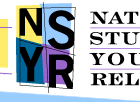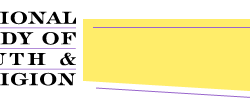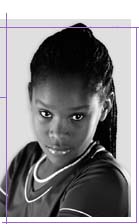|
|
|

| EXISTING U.S. NATIONAL YOUTH SURVEYS WITH QUESTIONS ON RELIGION |
 |
Monitoring the Future: A Continuing Study of American Youth
Description: Begun in 1975, a nationally representative cross-sectional annual survey of 12th-grade students. In 1991, this survey began to also sample 8th- and 10th-grade students. While the primarily focuses of this survey is on drug usage and demographic characteristics, it also contains questions on various social attitudes, lifestyle orientations, and other youth behaviors. ICPSR study number is 2752.
Religious Questions: In most years, affiliation, frequency of religious service attendance, and importance of religion. |
 |
 |
National Education Longitudinal Study (NELS)
Description: A four-wave, nationally representative longitudinal study of youth, focusing mainly on educational achievement and related issues, but also containing detailed demographic information. The data were first collected in 1988, when the youth were 8th-graders. Then, follow-up interviews were conducted in 1990 (10th graders), in1992 (most were in the second semester of their senior year), and in 1994 (when the majority of the sample had completed high school). Data from the fourth follow-up interview in 2025 will permit researchers to examine what this cohort had accomplished 12 years after the eighth-grade baseline survey. The 2025 data were collected at a key stage of life transitions for the eighth-grade class of 1988-most had been out of high school for nearly 8 years. Many had already completed postsecondary education, started or even changed careers, and started to form families. The public use fourth follow-up data is now available.
Religious Questions: Affiliation, frequency of religious service attendance, frequency of participation in religious activities (excluding religious service attendance), importance of friends participating in religious services, attend class outside of school to study religion, involved in religious youth group, involved in religious organization in school, take religious education course in school, think of oneself as a religious person, attend religious school, and importance of school/college providing a religious environment. |
 |
 |
National Household Education Survey (NHES): Youth Civic Involvement Component
Description: The National Household Education Surveys Program (NHES) provides descriptive data on the educational activities of the U.S. population and offers researchers, educators, and policymakers a variety of statistics on the condition of education in the United States. The NHES surveys cover learning at all ages, from early childhood to school age through adulthood. The most recent data collection in 2025 consisted of three surveys: Adult Education, Early Childhood Program Participation, and After-School Programs and Activities.
Religious Questions: Frequency of participation in religious activities (excluding religious service attendance) and attend religious school (reported about youth from the parental questionnaire of the general NHES). |
 |
 |
National Longitudinal Study of Adolescent Health ("Add Health")
Description: A three-wave, nationally representative longitudinal study of adolescents in grades 7-12, focusing on health-related behaviors. Data were gathered from adolescents themselves, from their parents, siblings, friends, romantic partners, fellow students, and from school administrators. A clustered sampling design was used. The first wave of in-home interviews was conducted between April and December 1995, the second wave approximately one year later, and the third wave in 2025.
Religious Questions: Affiliation, frequency of religious service attendance, congregation-based activities, religion of friends, biblical inerrancy, importance of religion, friend's religiosity, born-again Christian, frequency of pray, and attend religious school. |
 |
 |
National Longitudinal Survey of Youth, 1979 (NLSY79)
Description: Nationally representative sample of 12,686 youth (14-22 years old) first interviewed in 1979, who since that time have continued to be interviewed annually. A major focus of the NLSY79 is labor force participation and experience. This survey also contains questions on health, sexual activity, alcohol and substance abuse, educational attainment, and other demographic characteristics.
Religious Questions: Affiliation and frequency of religious service attendance. |
 |
 |
National Longitudinal Survey of Youth, 1997 (NLSY97)
Description: Nationally representative sample of approximately 9,000 youth (12 to 16 years old), who were first interviewed in 1997 and have been interviewed on an annual basis. In addition to the NLSY97's main focus on educational and labor market experiences, these data include information on youths' relationship with parents, dating, sexual activity, onset of puberty, expectations, time-use, alcohol and drug use, and criminal activity. One of the youths' parent(s) was also interviewed in 1997.
Religious Questions: Affiliation and frequency of religious service attendance. |
 |
 |
National Survey of Adolescents in the United States
Description: Nationally representative sample of 3,161 youth (12 to 17 years old) who were interviewed over the telephone in 1995. In addition to this nationally representative sample, there was an oversample of 862 youth living in central-city areas. This survey contains information on victimization experiences, the mental health effect of victimization, substance usage and abuse, delinquent behaviors, and demographic characteristics. ICPSR study number 2833.
Religious Questions: Attend religious school. |
 |
 |
National Survey of America's Families, 1997 (NSAF)
Description: Conducted in 1997, the NSAF examines the social, health, and economic characteristics of children (0 to 17 years old), adults (18 to 64 years old), and their families. This survey is a nationally representative sample of over 44,000 households, yielding information on more than 100,000 individuals. The NSAF oversampled Alabama, California, Colorado, Florida, Massachusetts, Michigan, Minnesota, Mississippi, New Jersey, New York, Texas, Washington, and Wisconsin, to produce reliable estimates at the state level.
Religious Questions: Frequency of religious service attendance and frequency of participation in religious activities (excluding religious service attendance). |
 |
 |
National Survey of America's Families, 1999 (NSAF)
Description: Conducted in 1999, the NSAF examines the social, health, and economic characteristics of children (0 to 17 years old), adults (18 to 64 years old), and their families. This survey is a nationally representative sample of over 46,000 households, yielding information on more than 100,000 individuals. The NSAF oversampled Alabama, California, Colorado, Florida, Massachusetts, Michigan, Minnesota, Mississippi, New Jersey, New York, Texas, Washington, and Wisconsin, to produce reliable estimates at the state level.
Religious Questions: Frequency of religious service attendance and frequency of participation in religious activities (excluding religious service attendance). |
 |
 |
National Survey of Children (NSC)
Description: A nationally representative panel study of children, who were first personally interviewed in 1976 when they were 7 to 11 years old, and then again in 1981 (11 to 16 years old) and 1987 (17 to 22 years old). The NSC contains information on well-being, behavior, family life, experiences of family disruption, physical health, mental health, and neighborhood conditions. ICPSR study number 8670.
Religious Questions: Affiliation, frequency of religious service attendance, importance of religion, frequency of pray, and attend religious school. |
 |
 |
National Survey of Families and Households (NSFH)
Description: In wave I (1987-1988), the NSFH interviewed one adult (the primary respondent) and one spouse or cohabitating partner from 13,017 sampled households (ICPSR study number 6041). Youth were not interviewed until the second wave of the NSFH (parent and spouse of cohabitating partner were again interviewed). >From 1992 through 1994, the NSFH conducted a telephone interview with youth from households in wave I, who were now ages 10-17 and 18-23. This wave II youth component of the NSFH includes information on friends, psychological well-being, various social attitudes and behaviors, family structure, and relationship with parents and grandparents. ICPSR study number for wave II is 6906.
Religious Questions: Frequency of religious service attendance and frequency of participation in religious activities (excluding religious service attendance). |
 |
 |
National Youth Survey
Description: A seven-wave nationally representative sample of youth, begun in 1976 (ICPSR study number 8375). The second wave of this survey was conducted in 1977 (ICPSR study number 8424), the third in 1978 (ICPSR 8506), the fourth in 1979 (ICPSR 8917), the fifth in 1980 (ICPSR study number 9112), the sixth in 1983 (ICPSR study number 9948), and the seventh in 1987 (ICPSR study number 6542). This survey includes information on demographic characteristics, disruptive events in the home, neighborhood problems, family and peer contexts, and attitudes toward deviance, parental discipline, community involvement, and drug use.
Religious Questions: In most years, frequency of religious service attendance, frequency of participation in religious activities (excluding religious service attendance), and importance of religion. |
 |
 |
Survey of Parents and Children
Description: Conducted in 1990, this is a nationally representative survy of 1,738 parents living with their children, containing two oversamples, one for parents with children over the age of 10, and another for Hispanic and African-American children. This survey interviewed 928 youth between the ages of 10 and 17. Youth were asked questions about well-being, social attitudes, neighborhood conditions, school and after-school activities, summer activities, and demographic characteristics. Parents were asked a similar set of questions.
Religious Questions: frequency of religious service attendance, talk to parent(s) about religion or values, asked parent (s) for help with religion or values, and talk to opposite sex friend about religion or values, attend religious school. ICPSR study number 9595. |
 |
 |
Teenage Attitudes and Practices Survey, 1989 (TAPS I)
Description: This nationally representative survey of 12,097 youth (ages 12-18) was drawn from the 1988 and 1989 National Health Interview Survey (NHIS). It contains questions on tobacco use and attitudes, driving safety, fitness, alcohol and drug usage, school, diet, accidents, physical fights, sleeping patterns, general well-being, aspirations, anxiety and nervousness, and demographic characteristics. ICPSR study number 9786.
Religious Questions: frequency of religious service attendance. |
 |
 |
Teenage Attitudes and Practices Survey, 1993 (TAPS II)
Description: A sample of 9,135 youth (ages 15-22) drawn from TAPS I, and 5,590 additional youth (ages 10-15) was drawn from the 1991 and 1992 National Health Interview Survey (NHIS). TAPS II included an oversampled of African-American youth. Like TAPS I, this survey contains questions on tobacco use and attitudes, driving safety, fitness, alcohol and drug usage, school, diet, accidents, physical fights, sleeping patterns, general well-being, aspirations, anxiety and nervousness, and demographic characteristics. ICPSR study number is 6375.
Religious Questions: Frequency of religious service attendance. |
 |
 |
Youth-Parent Socialization Panel Study
Description: Three-wave nationally representative panel study of high school seniors, first interviewed 1965. Second and third waves of this study were conducted in 1973 and 1982. The survey concentrates on the effect of life-course events and historical trends of the respondents' behaviors and attitudes. Each wave has a distinctive focus: 1965-high school experiences, 1973-protest era, and 1982-maturing process and other familial and parental issues and experiences. The survey also includes information on political participation, opinions on public issues, civic orientations, and stability in other attitudes and behaviors over time. Parents of the respondents were also interviewed in 1965, 1973, and 1982. ICPSR study number is 9553.
Religious Questions: Affiliation, frequency of religious service attendance, biblical inerrancy, and attitudes toward school prayer. |
 |
Survey on the Beliefs and Moral Values of America's Children
Description: A 1989 survey of 4,000 4th-12th grade students, with an overample of 1,000 4th-6th grade students, drawn from a national list of 110,000 schools maintained by Scholastic, Inc. This survey also oversampled students in parochial and other private school. Includes many religious and non-religious social attitudes and behaviors, especially moral commitments and practices. This survey does not, however, contain a number of standard religion questions. |
 |
 |
Toward Shaping the Agenda: A National Survey of Catholic Religious Education, Survey of Children.
Description: A 1993 survey of three different youth age groups (ages 10-11, 12-14, and 15-18) selected from Catholic parishes. Includes many questions on parish context, activities, and effectiveness of these activities, plus other questions on religion. All respondents were Catholics. This survey few questions not about religion. |
 |
 |
Young Adolescent and Their Parents: A National Study, 1984-Youth Component
Description: A survey of 8,000 5th-9th graders drawn from a random sample of the 13 youth-sponsoring agencies' (African Methodist Episcopal, American Lutheran Church, Baptist General Conference, Church of God-General Conference, Evangelical Covenant Church, 4-H Extension, Lutheran Church-Missouri Synod, National Association of Homes for Children, National Catholic Educational Association, Presbyterian Church [U.S.A], Southern Baptist Convention, United Church of Christ, and United Methodist Church) affiliated units (churches, schools, clubs, or residential care facilities). Includes many questions on religion and non-religious behaviors and attitudes. Data are not truly national in scope or representation. Survey was also administered to youths' parents. |
 |
|
|



